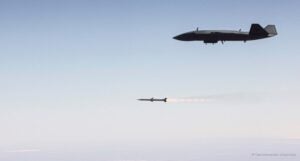
The Pentagon did not include any new requests for multi-year munitions procurements in its fiscal year 2025 budget submission, while the department still awaits confirmation its requests for FY ‘24 will be included in the final defense appropriations bill. “There’s no new [multi-year requests] in here. We’re hoping to get started on the ones we asked for a year ago. But we didn’t add new ones to the list. Seven [munitions] is a lot to start [with] in one year.…

 By
By 











